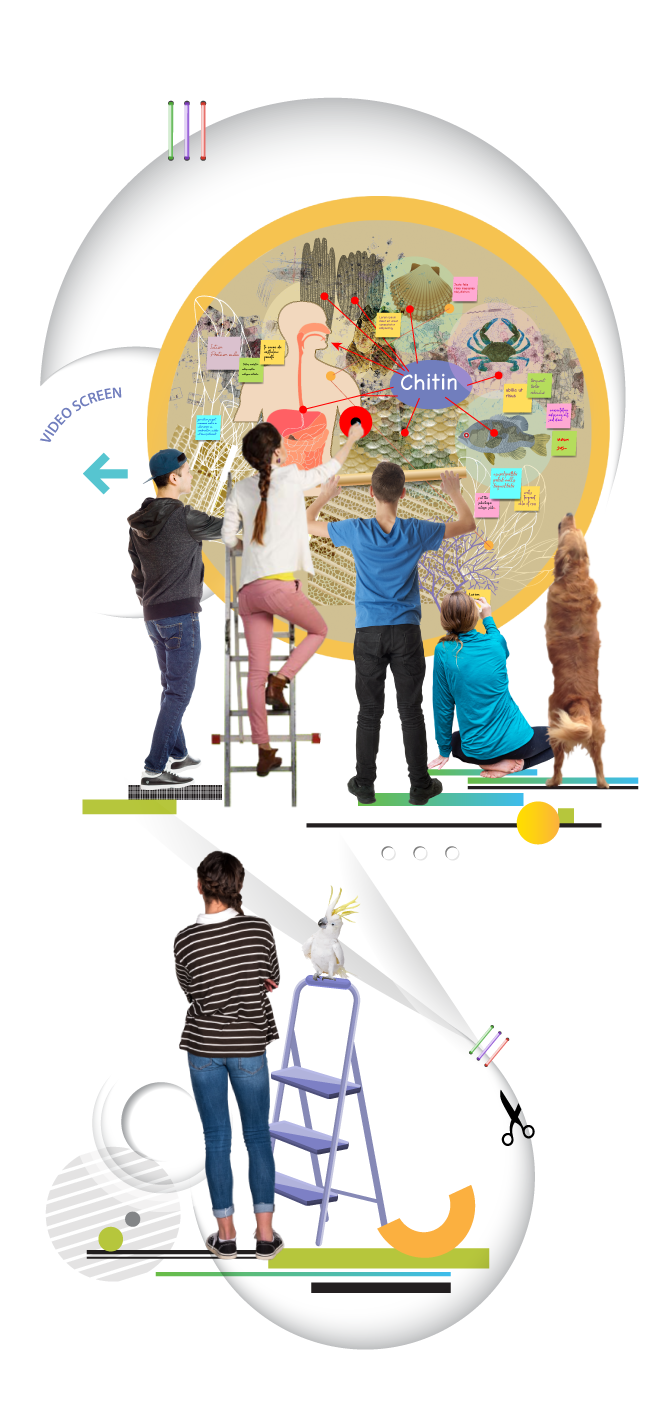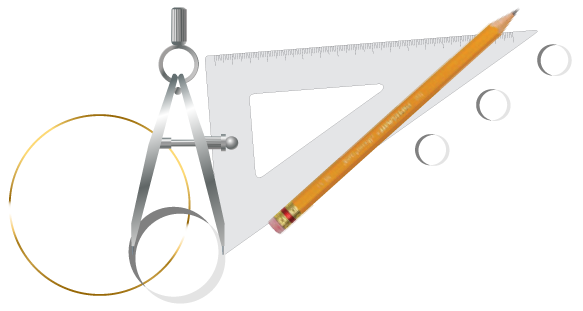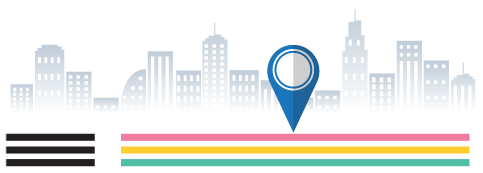Detectives' Board
In Ripples@Work, learning is not a series of fragmented learning experiences about particular facts, skills, or techniques. Ripples@Work is a model based on in-depth, long-term investigations, combining science, the humanities, and the arts.
The R@W investigative approach to learning sets up a scene where the learner perceives him/herself as an agent looking into the wonders and mysteries around them and, by doing so, learning about the world and themselves. Through this approach, the learner generates a repertoire of personal knowledge and skills that helps them to find a path towards self-actualization.
As a way of achieving this, R@W learning is organized as a process of dynamic interactions between the individual learner, the learning group, and the outside world. The primary layer of this organization is the interactions between the individual learner and the learning group (self ∞ others). These activities include: on the part of the self—keeping an individual and on the part of the group—maintaining an investigative display board—
The individual learner (makes visible or perceivable) his or her thoughts and feelings in material digital form on the pages of their CJ with the use of text, images, sounds and animations—cinematic writing. Through the process of cinematic writing, the learner attempts to make sense of what they are investigating. We will refer to this process as representing ∞ meaning-making. This leads to noticing things that are not obvious at first glance. Thus, new insights are gained and new questions emerge, pointing to the future direction of the investigation.
The student then shares their insights, doubts or questions with their learning group. They print out images and attach them to the group’s Detectives’ Board. They may have found or produced objects that are also placed on the DB. They have an area for watching videos together, and they listen to the audio that has been generated.
The DB serves as a space where individual ideas are connected and organized in a visible, tangible form that reflects the investigative process. Individual learners demonstrate how they have contributed to the collective knowledge production, refine their role in the group project, and figure out the further steps they have to take to achieve the common goal.
If the project is run online, the DB is organized on the platform where the information is shared.
We can say that the DWall is a space of synchronization (syncing) of the self and other people in group activities

Self ∞ Others
Mara’s story is invented, but it demonstrates some of the challenges a student-directed R@W investigative project might encounter.
The R@W CJ and DWall are important tools here. First of all, they provide transparency in the learning process and allow the R@W pedagogue to help the group avoid stumbling into chaos. And secondly, they allow the pedagogue to identify difficulties in the interactions between the individual student and the group, and help the students to resolve them.
The role of the R@W pedagogue is to help the students find ways to assert their unique differences, but also to learn how to use these differences to benefit the team project. In addition, the R@W pedagogue is focused on facilitating the balance between the desires of the group and the interests of the individual.
To cultivate citizens of an informed liberal democracy is one of the R@W goals. The model establishes learning conditions where, on the one hand, autonomy and individual preferences are the basis for human dignity and, on the other, the recognition of the individual by the group can only be realized if those individual preferences and actions are beneficial to others.
That is where the concept of self ∞ others comes from. It is impossible to live in society without tensions often arising between individuals and/or groups.
In R@W, tension is taken as a condition of learning, and participants learn new skills and knowledge by overcoming the tension.
Virtual versus Physical Reality
There is a growing concern among parents and educators that young people increasingly detach themselves from the real world. The Internet, with its abundance of attractions to satisfy any interest, is occupying more and more of young people’s time. Their immersion into the constructed world of artificial values and romanticized ideals provides young people with a false sense of reality. In a time when our world is moving rapidly into the unknown realm of super-powerful and super-intelligent machines, the understanding of the self as being part of physical reality—and appreciating that reality—is the anchor for individual stability.
The R&W DWall is a place where two realities—digital and physical—the interplay in a form that is perceived through the senses. That is, the photos and hand-drawn observations taken from the physical surroundings can be printed and displayed on the DB. Found objects and hand-made elements allow students to engage such senses as touch and smell, as well as sight. The links between the displayed objects are made with physical materials that embody abstract thinking in a tangible construct.
Such a process extends the scope of associations between the objects of the collected data and draws the individual into richer metacognitive considerations.
Project: The Mystery of Scaled Wings (part II; to read part I, go to the Multimodal Journal page)
On the Multimodal Journal page of this website, we imagined a project in which Mara Green used the CJ.
Mara is a natural artist. She was attracted by the beauty of butterflies’ wings. When she discovered that the butterflies’ wings were actually transparent and that what made them look so amazing were tiny scales that were organized by some stunning force of nature, Mara’s curiosity turned into a strong urge to explore the origins of this phenomenon.
However, someone in the group—let’s say Richie—got fascinated with the biological material called chitin which is the primary component of the scales on the butterflies’ wings. It turned out that chitin is also the main component of fish scales and the exoskeletons of many insects.
Chitin is similar to keratin that helps to form nails and hair in humans. In her CJ, Mara included a monologue in the form of an audio file where she declared crossly: ‘Richie found out from the Internet that people can take chitin, and he came up with the stupidest idea one can ever imagine: if chitin creates outer shells in many insects, would it be possible to create a form that will make humans grow a protective shell around their chest? Richie thinks that it would be cool if humans had such a protective layer!!!’
Mara got furious and refused to participate in such a stupid project when, to her utter shock, as we see in her video in the CJ, the rest of the group took up the idea with great enthusiasm. Mara posted the video explaining her frustration on her TikTok channel, asking people if Richie’s idea for the project was sick.
To learn how this situation will unfold and how the conflict is resolved, join our R@W School of Learning Pedagogy course.



